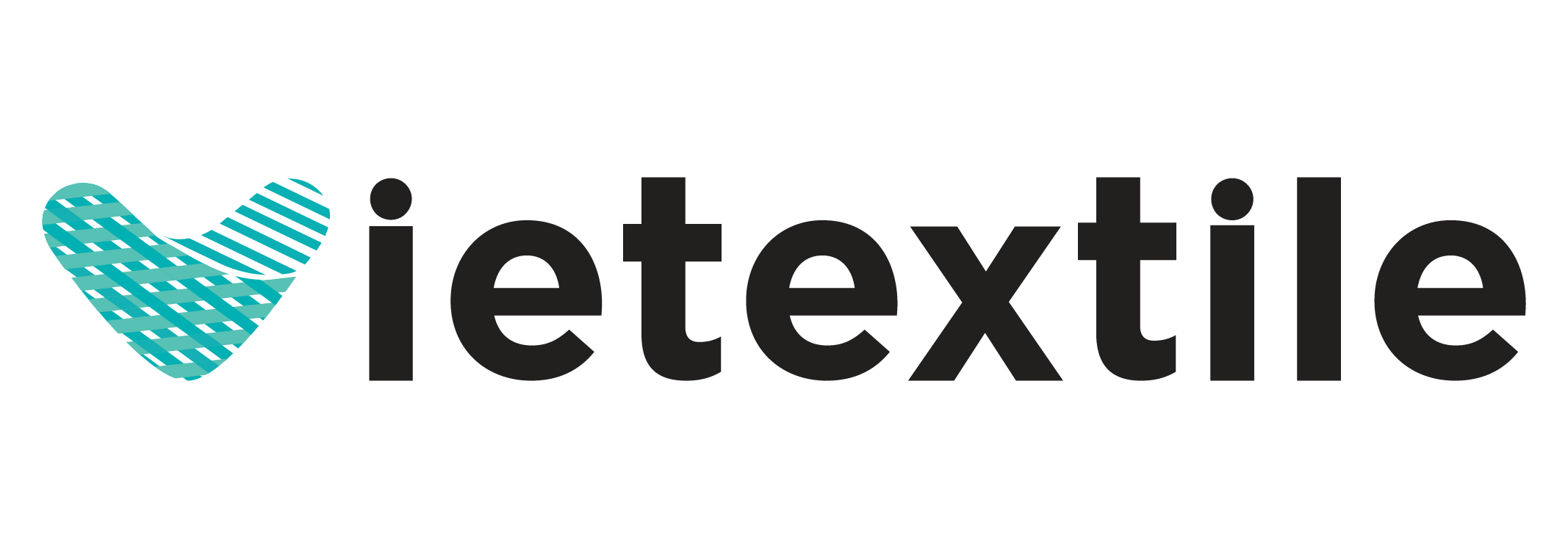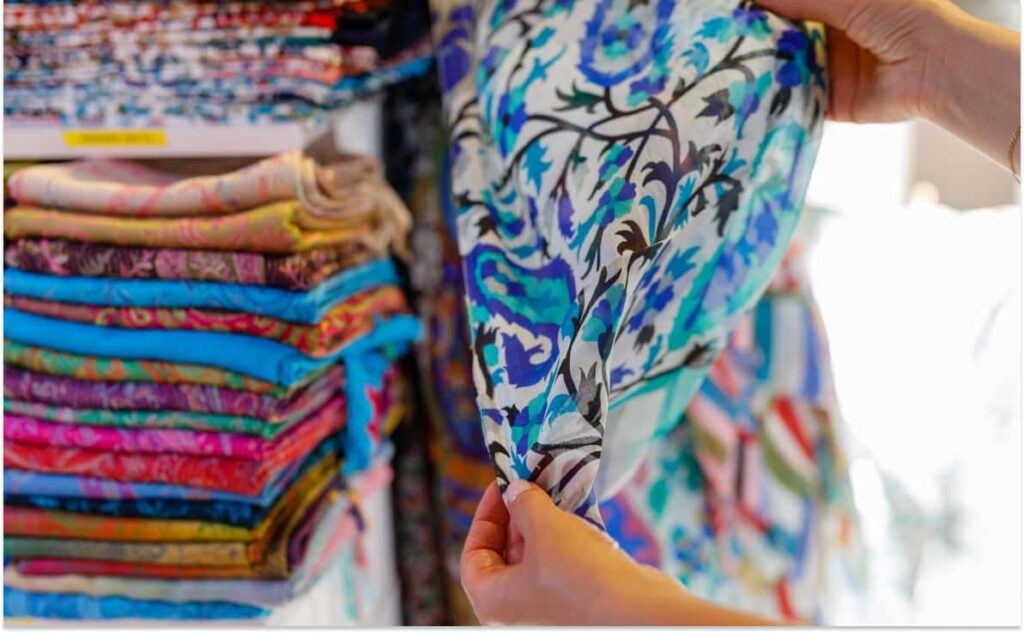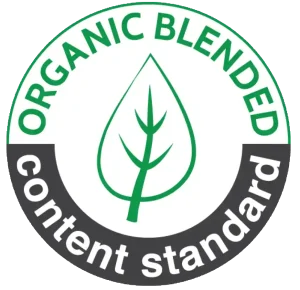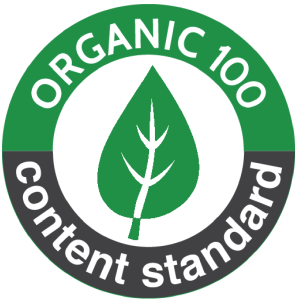Cotton remains the king of natural fibers, prized globally for its comfort, breathability, and versatility. As fashion and textile brands pivot towards rapid, on-demand production and complex, high-resolution designs, the manufacturing location must possess the specialized technical infrastructure capable of handling cotton’s unique chemical requirements.
Vietnam has emerged as the premier destination for high-quality, high-volume direct printing cotton fabric in Vietnam, rapidly setting itself apart from competitors. The global demand for sustainable, high-quality printed cotton is increasingly being met by factories specializing in direct printing cotton fabric in Vietnam.
The digital transition for cotton is fundamentally more complex than for synthetic fibers like polyester. Cotton requires Reactive ink chemistry, which demands precise pre-treatment (application of alkali and humectants), energy-intensive steam fixation, and rigorous post-print washing to achieve superior wash fastness and vibrant color yield.
Vietnam’s strategic investment in mastering this wet-processing complexity, combined with unparalleled trade access and an accelerating focus on environmental compliance, is the key driver of this global trend. The capability to execute flawless Reactive printing is what elevates the direct printing cotton fabric in Vietnam sector.
The “made in Vietnam” designation for printed cotton now symbolizes not just manufacturing scale but technical mastery. This comprehensive analysis dives into the specific technical, economic, and compliance factors that underpin Vietnam’s ascent as the world’s go-to partner for direct printing cotton fabric in Vietnam.
We detail the operational advantages, the strict quality assurance protocols, and the infrastructural maturity that collectively define the competitive edge of Vietnamese digital textile suppliers specializing in direct printing cotton fabric in Vietnam. The increasing market share for cotton textiles printed here confirms the strength of direct printing cotton fabric in Vietnam.
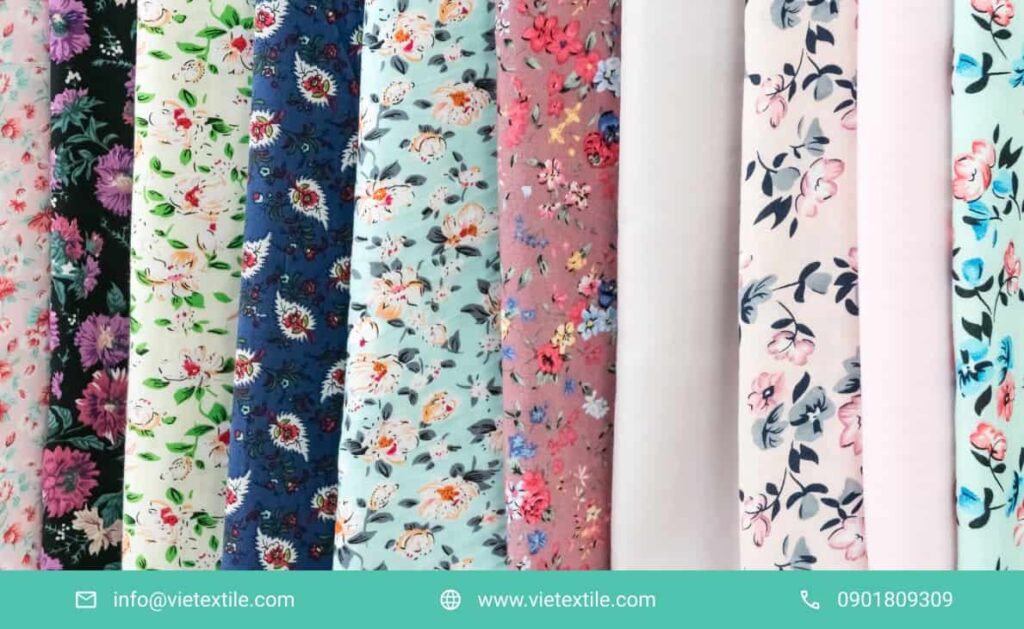
1. The Technical Mastery of Reactive Ink Systems for Cotton
Nội dung tóm tắt
ToggleCotton printing relies on Reactive inks, which chemically bond with the cellulose fiber. This process demands absolute precision in three critical, sequential steps—a hallmark of advanced Vietnamese DTF facilities specializing in direct printing cotton fabric in Vietnam.
1.1. Precision Pre-treatment: The Canvas Preparation
The pre-treatment stage dictates the final color yield and wash performance. In the context of direct printing cotton fabric in Vietnam, pre-treatment is no longer a simple application but a measured chemical process essential for the success of direct printing cotton fabric in Vietnam.
- Role of Alkali and Urea: The pre-treatment solution must contain alkali (e.g., sodium carbonate) to raise the fabric’s {pH to the necessary level ({pH 10.5–12.0) for the chemical reaction to occur. It must also include humectants (typically urea or urea substitutes) to keep the dye humid during the fixation phase, facilitating the migration and reaction of the dye with the cellulose.
- Pick-Up (PU%) Control: Vietnamese factories utilize high-precision foulards or padding machines to achieve exact control over the Pick-Up Percentage ({\pm 1\% tolerance). Inconsistent PU% leads to uneven color density (mottling or patchiness) across the fabric roll, undermining the quality of the direct printing cotton fabric in Vietnam product.
- Drying Control: After padding, the fabric must be dried uniformly. Controlled-temperature drying (often multi-zone ovens) prevents migration of the pre-treatment chemicals, which would otherwise result in dye build-up on the fabric edges. This careful preparation is key to repeatable quality in direct printing cotton fabric in Vietnam.
1.2. Steam Fixation: Driving the Chemical Bond
Unlike Disperse inks (fixed by dry heat), Reactive inks require saturated steam fixation. Vietnam’s investment in sophisticated, high-capacity industrial steamers is crucial for processing direct printing cotton fabric in Vietnam efficiently.
- Temperature and Saturation: The fixation environment must maintain saturated steam at a temperature range of {100–102^{\circC. Insufficient temperature or dry steam leads to incomplete fixation, meaning most of the dye washes out in the next step, causing low color yield and poor wash fastness.
- Dwell Time Consistency: The fabric must remain in the steamer for a precise dwell time (typically {7–10 minutes). Modern steamers in Vietnam use automated conveyor systems to ensure every point on the fabric receives the exact required exposure. This step is non-negotiable for high-quality direct printing cotton fabric in Vietnam.
- Heat Transfer Uniformity: Auditing the steamer for temperature uniformity across the width of the fabric is mandatory, as variances lead to “center-to-edge” color shifts, a common production flaw that successful direct printing cotton fabric in Vietnam operations must eliminate.
1.3. Rigorous Post-Treatment Washing
The final, and perhaps most critical, step for direct printing cotton fabric in Vietnam is the removal of unfixed, hydrolyzed Reactive dye and residual chemicals.
- The Soaping Process: Washing must include a “soaping” stage at high temperatures ( 95^{\circC) with chemical auxiliaries to rapidly and completely clear the unfixed dye. Failure here results in poor wet rub fastness (crocking) and potential staining of white areas of the design.
- Water Quality and ETP: The high water consumption of this stage is offset by Vietnam’s modern Effluent Treatment Plants (ETP) which handle the high-load wastewater effectively, demonstrating compliance with environmental norms crucial for direct printing cotton fabric in Vietnam.
2. Operational Excellence: Speed, Flexibility, and Vertical Integration
The ability to offer speed-to-market while maintaining quality is the core business advantage of direct printing cotton fabric in Vietnam. The competitive global textile market increasingly relies on the efficiency provided by direct printing cotton fabric in Vietnam solutions.
2.1. Vertical Integration: Yarn-to-Print Control
Vietnam’s textile sector has evolved towards full-cycle manufacturing, greatly benefiting DTF cotton production and enhancing the overall value proposition of direct printing cotton fabric in Vietnam.
- Eliminating Supply Chain Lag: When a factory controls its own weaving/knitting mill, the cotton fabric is prepared (scoured, bleached) immediately, ensuring optimal readiness for the highly sensitive pre-treatment stage. This eliminates external delays and guarantees the chemical preparation is perfectly matched to the fabric’s properties, a key differentiator for direct printing cotton fabric in Vietnam.
- Consistent Greige Quality: Vertical control guarantees a stable supply of high-grade cotton (e.g., BCI, organic certified), which is essential for uniform ink absorption and the smooth running of the DTF printers, ensuring the foundation of quality for direct printing cotton fabric in Vietnam.
2.2. Optimized Lead Times and MOQs
Digital printing inherently allows for lower Minimum Order Quantities (MOQs), but Vietnamese efficiency maximizes this advantage for direct printing cotton fabric in Vietnam.
- Fast Sampling (Strike-Offs): Due to local material availability, strike-offs (sample prints) can often be processed within {3–5 days, significantly faster than regions requiring overseas shipment of specialty fabrics. Rapid prototyping is a major strength of direct printing cotton fabric in Vietnam.
- Production Flexibility: DTF enables a rapid transition between print designs and colorways without the lengthy setup time and high costs associated with rotary screen printing screens. This is critical for fashion brands managing high-SKU, low-volume collections and is facilitated by direct printing cotton fabric in Vietnam.
- Average Production Lead Time: The total production cycle (from ready greige fabric to finished, tested, and rolled goods) for bulk cotton orders typically ranges from {4 to 6 weeks, making direct printing cotton fabric in Vietnam competitive for global replenishment programs.
2.3. The Role of Industrial Fleet Investment
The capacity for direct printing cotton fabric in Vietnam is bolstered by continuous investment in specialized, high-capacity machinery tailored for cotton.
- Single-Pass Technology Adoption: Leading mills are incorporating Single-Pass digital printers, which can print up to {50 to 70 meters per minute. This scaling allows them to handle bulk cotton orders that were previously only feasible with screen printing, closing the capacity gap while retaining digital flexibility. This transition makes direct printing cotton fabric in Vietnam a powerhouse.
3. Compliance and Sustainability: Non-Negotiable for Cotton Exports
Due to the heavy use of water and chemicals in processing cotton, compliance is a strategic requirement for direct printing cotton fabric in Vietnam destined for Europe and North America. Sustainability is a primary focus for partners in direct printing cotton fabric in Vietnam.
3.1. ZDHC and Chemical Purity Mandates
The chemical management for Reactive cotton printing is scrutinized intensely by international buyers.
- Reactive Ink and Auxiliary Certification: Brands insist that every chemical used—the Reactive inks themselves, the urea/humectants, the alkali, and the soaping agents—must be registered and compliant with the ZDHC Manufacturing Restricted Substances List (MRSL). Top Vietnamese factories achieve ZDHC Gateway Level 2 or 3 certification, proving they proactively manage chemical inputs essential for high-quality direct printing cotton fabric in Vietnam.
- Heavy Metal and Azo Dye Exclusion: Rigorous testing is performed to ensure the inks used for direct printing cotton fabric in Vietnam are free of restricted heavy metals and Azo dyes that could cleave into harmful amines upon wear.
3.2. Water Footprint and ETP Excellence
Vietnam’s ETP infrastructure for textile processing is rapidly improving to meet global environmental demands.
- Wastewater Management: The high Chemical Oxygen Demand (COD) and Total Suspended Solids (TSS) from cotton washing require specialized biological and chemical treatment. Modern Vietnamese ETPs utilize advanced technologies, including sequencing batch reactors (SBR) and membrane bioreactors (MBR), to ensure discharge water meets or exceeds national and international discharge standards, thus enabling responsible direct printing cotton fabric in Vietnam.
- Water Usage Reporting: Factories are increasingly providing detailed water consumption metrics ({Liters per kilogram of fabric) to allow brands to measure and report on their Scope 3 emissions and water stewardship goals. This transparency is a key benefit of choosing direct printing cotton fabric in Vietnam.
3.3. Worker Safety and Social Compliance (SMETA/SA8000)
Social accountability remains a fundamental component of the “made in Vietnam” value proposition, especially in the chemical-intensive process of direct printing cotton fabric in Vietnam.
- Handling Chemical Hazards: Due to the handling of strong alkalis in pre-treatment and various chemical auxiliaries, factory social audits (SMETA, SA8000) heavily scrutinize chemical storage, handling procedures, personal protective equipment (PPE) provision, and emergency response training to ensure worker safety within the direct printing cotton fabric in Vietnam operations.
4. Quality Assurance Protocols: Fastness, Color Management, and Defect Control
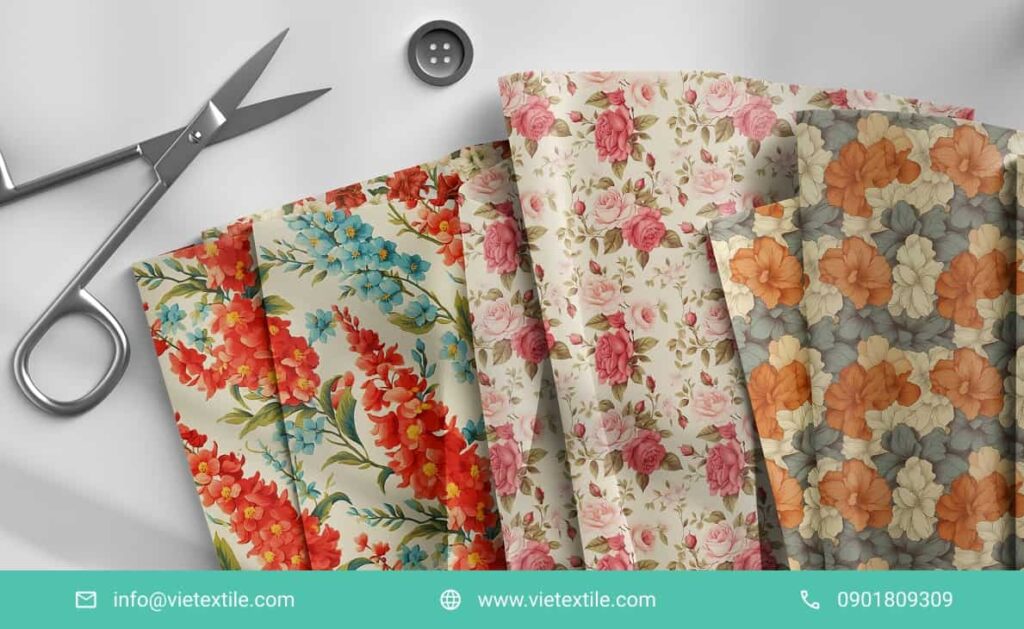
Quality consistency is the differentiating factor for direct printing cotton fabric in Vietnam. Suppliers must adhere to strict, verifiable quality assurance (QA) and testing protocols to succeed in the global market for direct printing cotton fabric in Vietnam.
4.1. Color Management and Delta E ( \DeltaE) Fidelity
Color accuracy must be maintained from the digital file to the final roll for reliable direct printing cotton fabric in Vietnam.
- ICC Profile Generation: Custom ICC profiles are generated specifically for each type of cotton base (e.g., cotton sateen vs. cotton single jersey) and reactive ink set. This ensures accurate transformation of the digital color data (RGB/CMYK) to the printer’s color gamut, a requirement for high-end direct printing cotton fabric in Vietnam.
- \DeltaE Tolerance: Production standards mandate a tight color tolerance. For premium brands, the maximum acceptable deviation from the approved strike-off or standard (Lab value) is {\Delta{E < 2.0. A higher \DeltaE typically results in rejection, demonstrating the precision needed for direct printing cotton fabric in Vietnam.
4.2. Physical Testing and Fastness Requirements
Final product quality of the direct printing cotton fabric in Vietnam output is verified through standardized physical tests (AATCC or ISO).
- Wash Fastness Check: This is the most critical test for Reactive-printed cotton. Tests are conducted on a controlled sample to confirm color retention and minimal staining of adjacent white fabric after multiple washes (e.g., AATCC 61 3A). The required rating is generally {4.0 or higher, a benchmark consistently met by leading direct printing cotton fabric in Vietnam suppliers.
- Dry and Wet Crocking: Tested using the AATCC Crockmeter, this verifies that the high-temperature washing effectively removed all unfixed dye. Poor wet crocking is an immediate failure and necessitates re-washing or rejection.
- Shrinkage Control: DTF processing involves significant wet-processing (steaming and washing). The factory must use stenter frames and compaction finishing machines to control residual shrinkage to the brand’s tolerance (typically {\pm 3\%), preventing fit issues in the final garment printed by direct printing cotton fabric in Vietnam.
4.3. Print Defect Grading
Cotton’s natural fiber structure makes it susceptible to minor print defects. Clear grading protocols are essential for maintaining the reputation of direct printing cotton fabric in Vietnam.
- Four-Point System Implementation: Factories utilize the industry-standard Four-Point System to grade printed fabric rolls. Defects (such as color streaks, banding from nozzle failures, or contamination spots) are assigned points based on size, and the total points per 100 square yards determine if the roll passes or fails.
5. Scaling Capacity and Future Investment Trends
The future of direct printing cotton fabric in Vietnam is defined by scale and automation, securing its position as a global leader in high-volume textile production. The success of direct printing cotton fabric in Vietnam is reliant on continuous technological advancement.
5.1. Single-Pass Investment and OPEX Efficiency
The shift to Single-Pass digital printers is a game-changer for the operating expenditure (OPEX) of high-volume direct printing cotton fabric in Vietnam.
- Cost-Per-Meter Reduction: While the capital expenditure (CAPEX) for Single-Pass machines is high, the massive throughput ({> 20,000 meters/day) amortizes costs much faster, driving down the OPEX per meter, making digitally printed cotton competitive with rotary screen printing for medium-to-large runs. This makes direct printing cotton fabric in Vietnam economically attractive.
- Reactive Ink Optimization: Investment in these machines encourages ink suppliers (like VieTextile) to develop highly stable, high-pigment-load Reactive inks tailored for the high-speed Single-Pass printheads, further perfecting the process of direct printing cotton fabric in Vietnam.
5.2. Automation in Post-Treatment
Future investments will focus on automating the water-intensive washing and finishing stages to improve consistency and reduce labor costs in direct printing cotton fabric in Vietnam.
- Automated Dosing: Implementing sensors and automated dosing systems in the washing range ensures the precise amount of soaping and neutralizing agents are used, minimizing chemical consumption and maximizing washing efficiency, a crucial refinement for direct printing cotton fabric in Vietnam.
- Data Integration: Linking the washing range parameters (temperature, speed, water flow) to the factory’s central Manufacturing Execution System (MES) allows brands to monitor the post-treatment process in real-time and verify compliance.
5.3. Circularity and Recycled Cotton Integration
Vietnam is positioning itself to handle the growing demand for sustainable cotton printing. The adoption of sustainable practices further solidifies the reputation of direct printing cotton fabric in Vietnam.
- GOTS and OCS Certification: Factories that print direct printing cotton fabric in Vietnam often obtain certifications like the Global Organic Textile Standard (GOTS) or the Organic Content Standard (OCS) to verify the sustainability and traceability of the cotton fiber before it enters the digital printing process. This is crucial for brands’ sustainable sourcing goals.
6. Risk Management and Strategic Sourcing Framework
Securing a reliable supply chain for direct printing cotton fabric in Vietnam requires meticulous risk assessment and contractual clarity. Strategic partnerships minimize risks when sourcing direct printing cotton fabric in Vietnam.
6.1. Contractual IP Protection and Data Security
Protecting proprietary designs and digital print files is critical in high-resolution digital manufacturing, especially for direct printing cotton fabric in Vietnam.
- NDAs and File Handling: All partnership agreements must include robust Non-Disclosure Agreements (NDAs) specific to digital design files. The factory’s IT protocols must ensure design files are stored on secure, access-controlled servers, isolated from public networks.
- Physical Security: The printing room, where master strike-offs and printed goods are handled, should be a physically restricted area with limited staff access, verified during third-party security audits of the direct printing cotton fabric in Vietnam facility.
6.2. Chemical Supply Chain Resilience
Reliance on high-quality, specialty Reactive inks and pre-treatment chemicals creates a single point of failure if the supply chain is disrupted.
- Dual-Source Strategy for Key Inputs: Brands should require the Vietnamese supplier to maintain an inventory or dual-sourcing relationship for critical chemical inputs (e.g., their primary black Reactive ink) from at least two ZDHC-compliant global suppliers. This safeguards the continuity of direct printing cotton fabric in Vietnam production.
- Inventory Oversight: Negotiate minimum inventory levels for inks and consumables to mitigate risks associated with international shipping delays or sudden regulatory changes affecting chemical import.
6.3. Financial and Operational Risk Mitigation
Ensuring the financial stability of the partner and clear operational terms is key for successful direct printing cotton fabric in Vietnam projects.
- Factory Age and CAPEX Status: Prioritize factories that have recently invested in new, industrial-grade DTF equipment (within the last 3-5 years). This indicates financial stability and a commitment to modern technology, reducing the risk of technical failures due to aging machinery in the direct printing cotton fabric in Vietnam sector.
- Tolerance for Remake/Rework: Contracts must clearly define the brand’s tolerance levels for defective meters (e.g., maximum {1\% defective meterage per roll) and specify the factory’s responsibility for immediate remakes and the corresponding impact on delivery deadlines.
8. Advanced Digital Textile Workflow Integration and Traceability
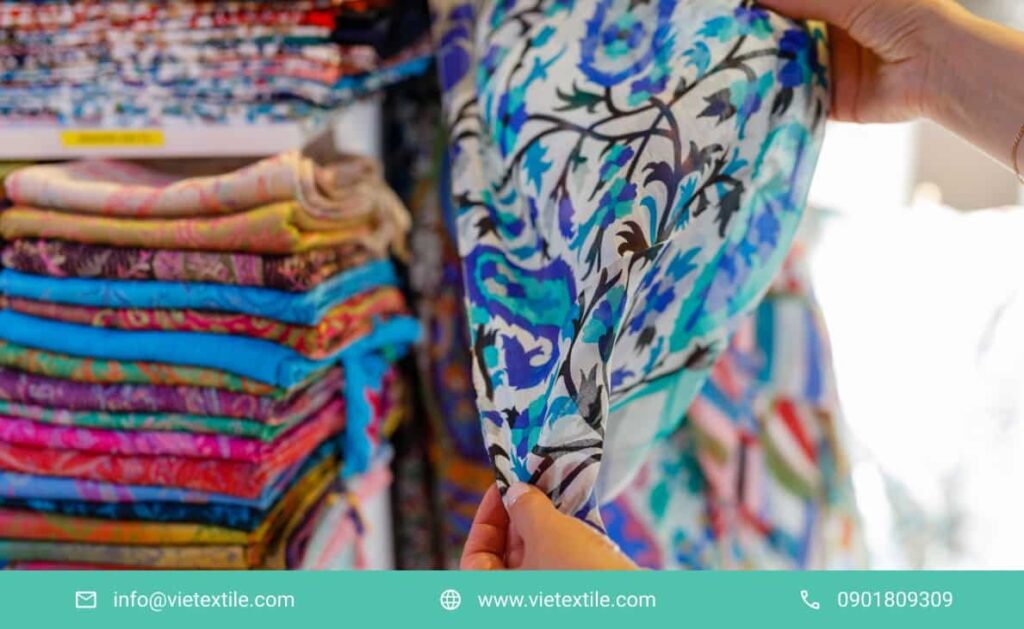
As production volume increases, the efficiency of direct printing cotton fabric in Vietnam depends critically on integrating the digital workflow across all stages, from design approval to final shipment. This integration is essential for managing the complexity of Reactive printing.
8.1. End-to-End Color Data Management
Maintaining color fidelity across different machines, seasons, and factory locations is a critical challenge that integrated workflows solve for direct printing cotton fabric in Vietnam.
- Centralized ICC Profile Library: Leading manufacturers maintain a centralized, cloud-based library of ICC profiles, ensuring every printer, RIP station, and spectrophotometer uses the exact same, approved color data for a given cotton base. This standardization is vital for globally consistent direct printing cotton fabric in Vietnam.
- Spectrophotometric Quality Gates: The workflow requires automated checks where color measurements (L^*,a^*,b^*) are taken after pre-treatment, after printing (wet state), and after washing (final state). Any deviations trigger immediate alerts, allowing the operator to adjust the steam or washing parameters dynamically.
- Metadata Attachment: Every finished fabric roll produced via direct printing cotton fabric in Vietnam is assigned a unique digital identifier (QR code or RFID tag) that is linked to a database containing its full color history, \DeltaE pass/fail status, and the specific ink batch used.
8.2. Traceability from Yarn to Finished Print
The demand for complete transparency, driven by acts like the EU’s Digital Product Passport (DPP), requires robust traceability systems from every supplier of direct printing cotton fabric in Vietnam.
- Raw Material Verification: The digital workflow must capture certificates proving the origin (e.g., Organic Content Standard or recycled content) of the cotton yarn before it is fed to the knitting/weaving stage. This data is the foundation of traceability for direct printing cotton fabric in Vietnam.
- Chemical Consumption Logging: IoT sensors integrated into the pre-treatment padders and washing ranges automatically log the precise volume of water, steam, and chemical auxiliaries used per linear meter of direct printing cotton fabric in Vietnam. This verifiable data is essential for sustainability reporting.
- Integration with Client Systems: The ultimate goal is API-level integration, allowing international brand clients to remotely query the Vietnamese factory’s MES system and pull real-time production status, quality reports, and compliance documentation for any order of direct printing cotton fabric in Vietnam. This level of digital trust is a key competitive edge.
9. Comparative Economics: ROI of DTF Cotton Vietnam vs. Traditional Methods
The economic argument for sourcing direct printing cotton fabric in Vietnam is now compelling, often demonstrating a superior Return on Investment (ROI) over traditional screen printing methods, particularly when factoring in market agility and sustainability costs.
9.1. Cost of Ownership Analysis (DTF vs. Rotary Screen)
While the initial CAPEX for industrial DTF is high, the variable cost structure shifts the financial advantage toward digital for modern fashion cycles.
| Cost Factor | Rotary Screen Printing (Traditional) | Digital DTF (Direct Printing Cotton Fabric in Vietnam) | Economic Advantage |
| Setup Cost | Very High (Engraving Screens, 500-1,500 per color) | Very Low (Digital File Processing Only) | Digital is superior for low MOQs and complexity |
| Color Changeover Time | High (Hours for cleaning and screen change) | Very Low (Minutes for file upload) | DTF excels at speed and flexibility |
| Inventory Risk | High (Must forecast large volumes for screen efficiency) | Low (Print-on-demand reduces unsold stock) | DTF provides superior inventory risk management |
| Chemical/Water Waste | High (Due to screen washing and high printing volume) | Lower (Ink is only applied where needed) | DTF aligns with rising sustainability costs in direct printing cotton fabric in Vietnam |
9.2. Realizing Cost Savings Through Reduced Inventory Risk
The most significant financial gain from direct printing cotton fabric in Vietnam comes not from the cost per meter, but from the avoidance of overproduction.
- Lower MOQ Financial Model: By enabling low MOQs (down to {100 meters), brands can test new designs with minimal commitment. This reduces the need for markdowns and clearance sales, which can save more money than the raw cost difference between digital and screen printing.
- Design Complexity at No Extra Cost: In rotary screen printing, complexity (more colors, finer detail) dramatically increases the cost due to the number of screens required. In direct printing cotton fabric in Vietnam, complexity is free; the ink consumption is the only variable, allowing for unlimited design detail without escalating manufacturing costs.
9.3. Long-Term Value of Compliance and Traceability
Investing in direct printing cotton fabric in Vietnam that meets ZDHC standards is a hedge against future regulatory risk.
- Avoidance of Penalties: Non-compliant sourcing can lead to rejected shipments, fines, and market bans (e.g., in the EU). By choosing ZDHC-certified direct printing cotton fabric in Vietnam, brands avoid these potentially massive financial penalties, making the premium for compliance a sound financial investment.
- Brand Reputation and Premium Pricing: Consumers are increasingly willing to pay a premium for verified sustainable goods. The transparency and compliance offered by top Vietnamese DTF partners directly support a brand’s ability to market high-value, fully traceable cotton apparel.
10. Conclusion: Vietnam’s Indispensable Role in Digital Cotton
The ascent of direct printing cotton fabric in Vietnam as a global manufacturing trend is a testament to the convergence of technical excellence, strategic economic advantages, and a robust commitment to global compliance. Mastery of the complex Reactive ink chemistry—the pre-treatment, steaming, and exhaustive washing—sets Vietnamese suppliers apart, guaranteeing the wash fastness and vibrancy demanded by the premium market.
Combined with a vertically integrated supply chain, increasing investments in Single-Pass efficiency, and proactive adoption of ZDHC and OEKO-TEX standards, Vietnam offers a resilient, high-quality, and agile solution for global brands seeking reliable direct printing cotton fabric in Vietnam.
The advanced digital workflow integration, coupled with favorable economics, confirms that choosing a partner for direct printing cotton fabric in Vietnam is choosing a strategically critical component for a future-proof supply chain. Global brands must now look to direct printing cotton fabric in Vietnam for their high-end, complex, and sustainable production needs.
Partner with VieTextile to access the highest-grade digital inks, chemical auxiliaries, and technical consulting necessary to integrate seamlessly with and elevate the performance of your chosen direct printing cotton fabric in Vietnam facility.
Contact VieTextile Today for Expert Consultation!
Hotline: 0901 809 309
Email: info@vietextile.com
Website: https://vietextile.com
